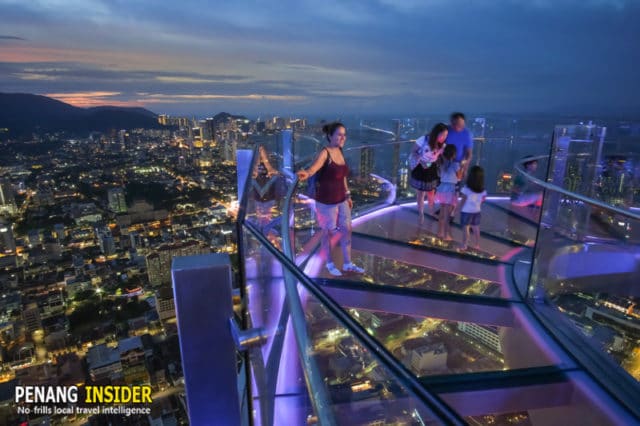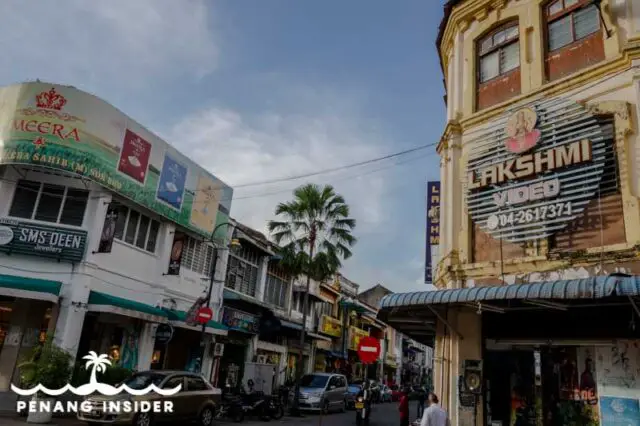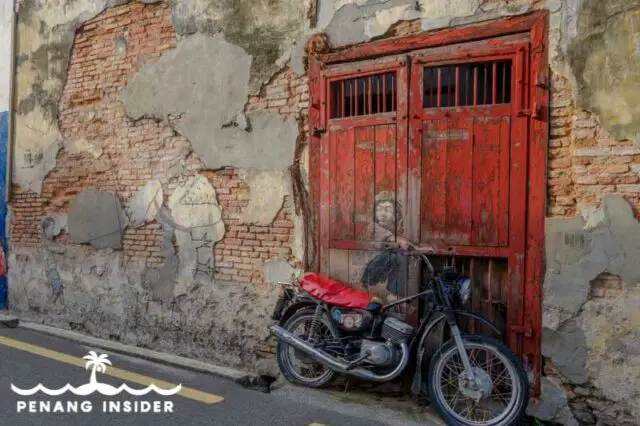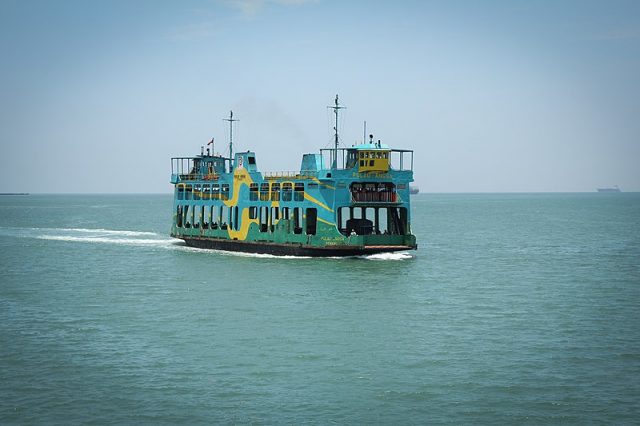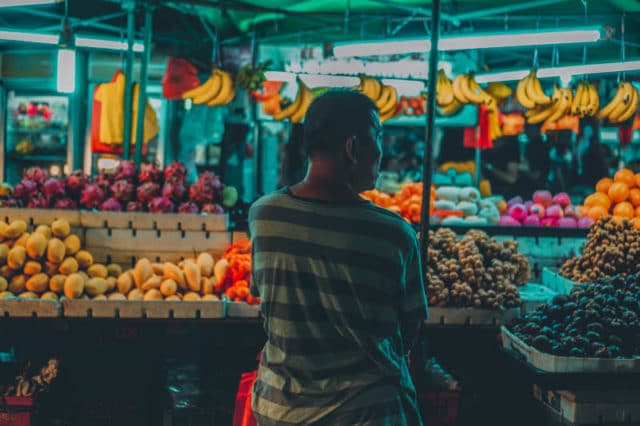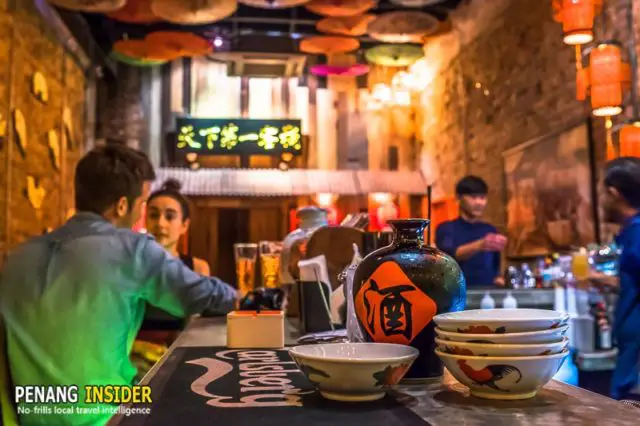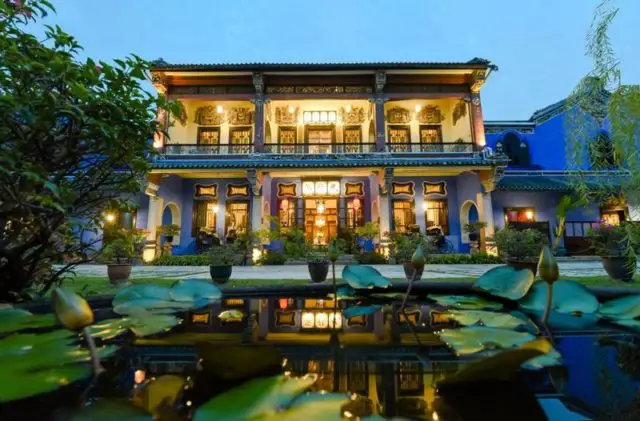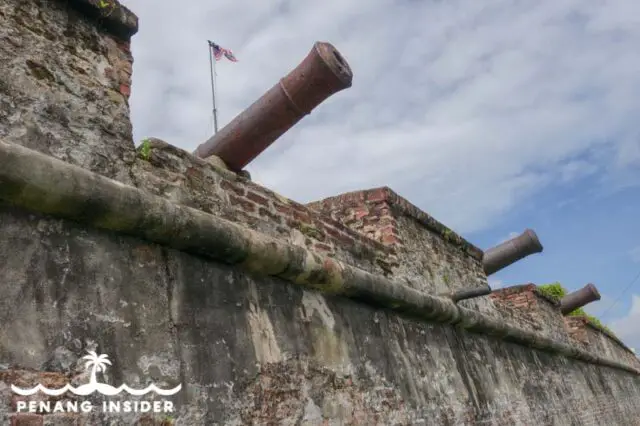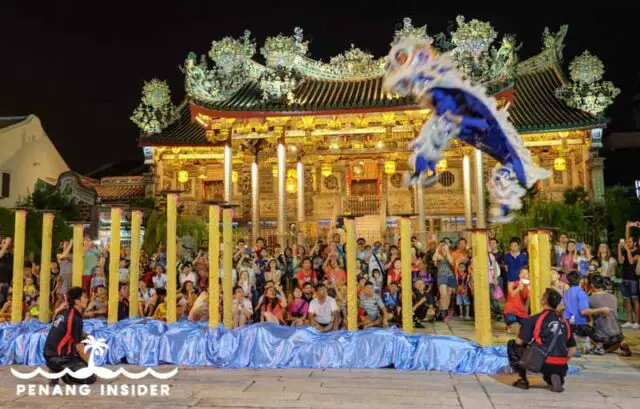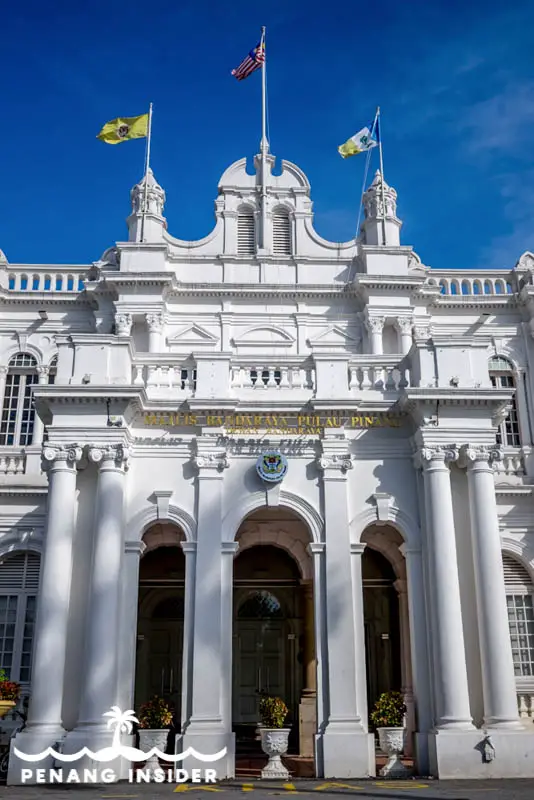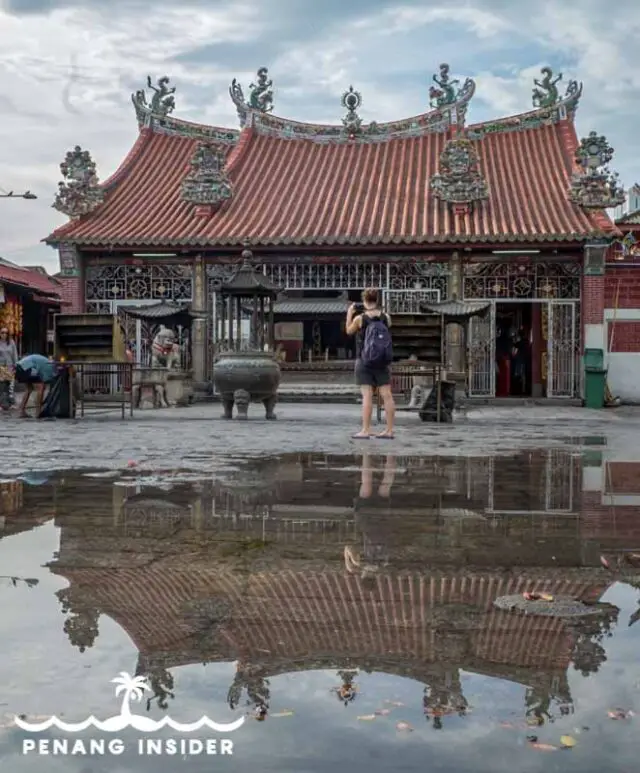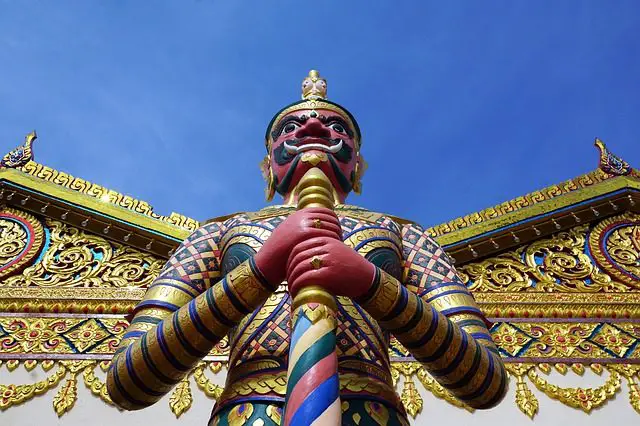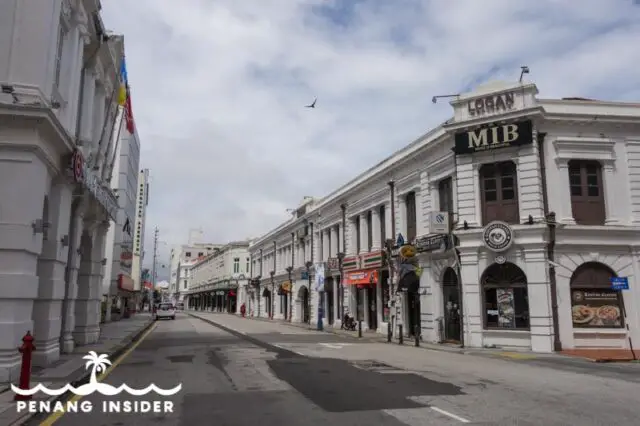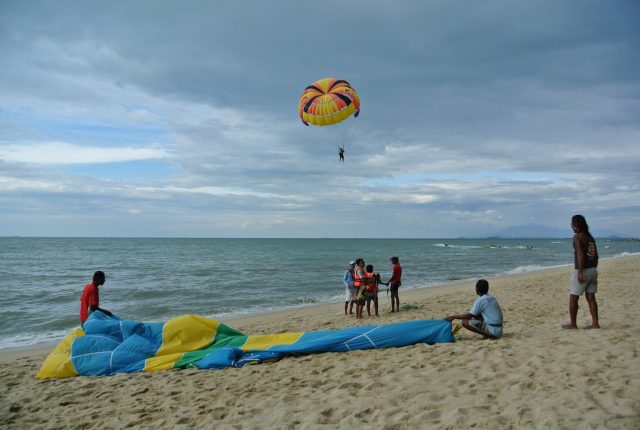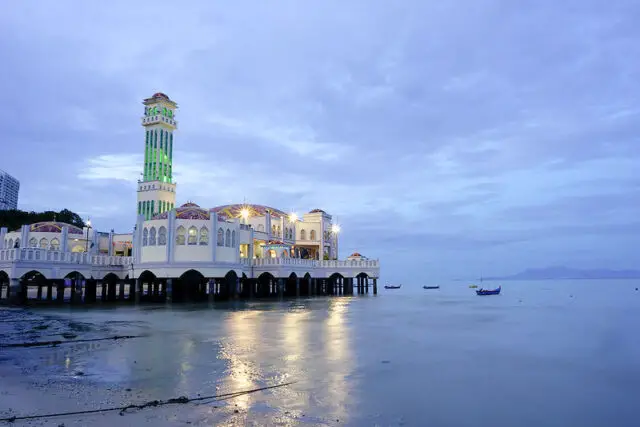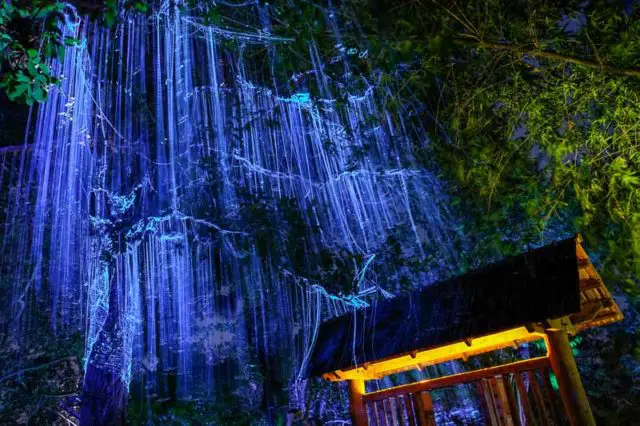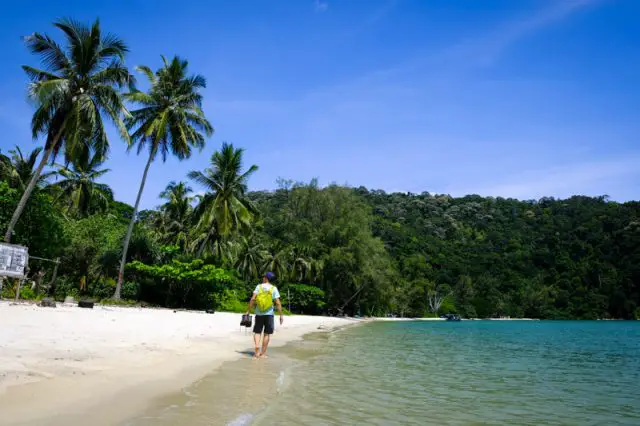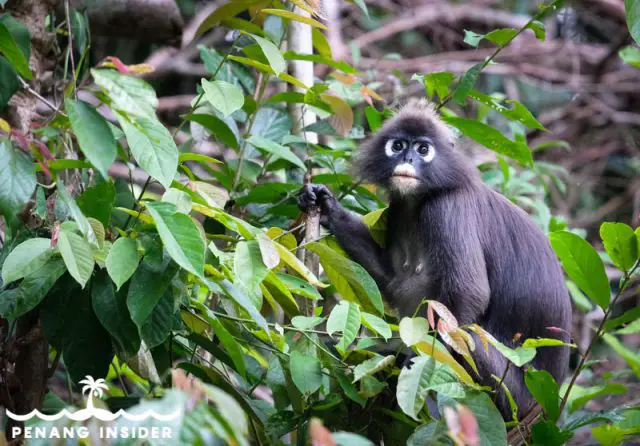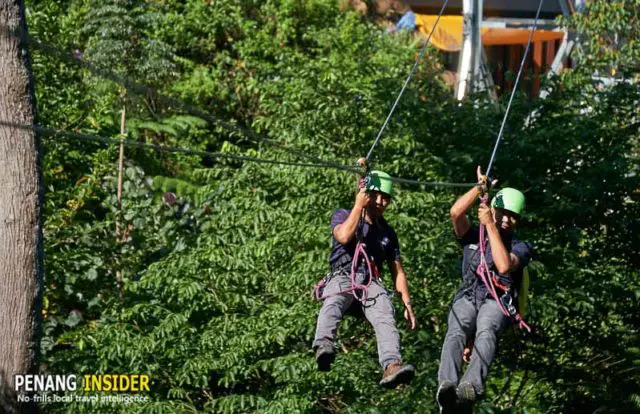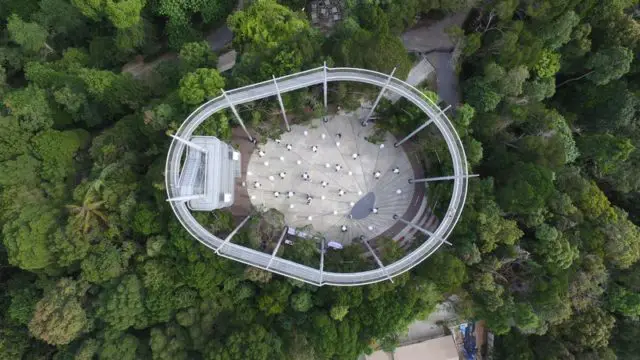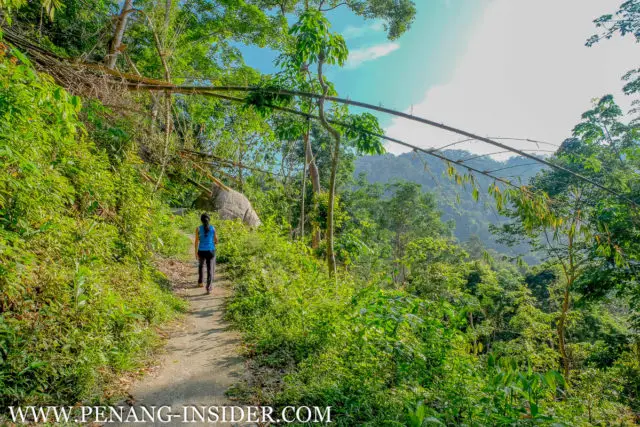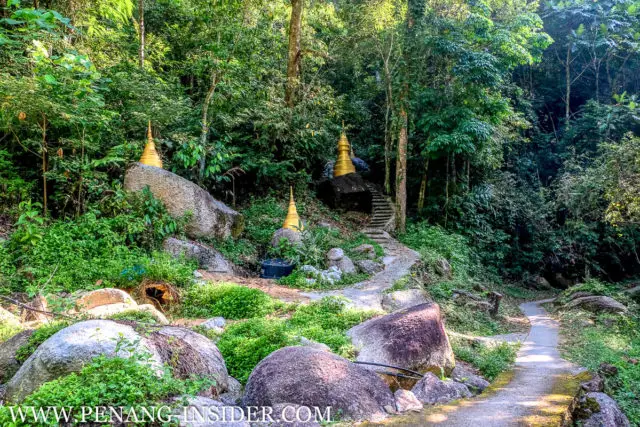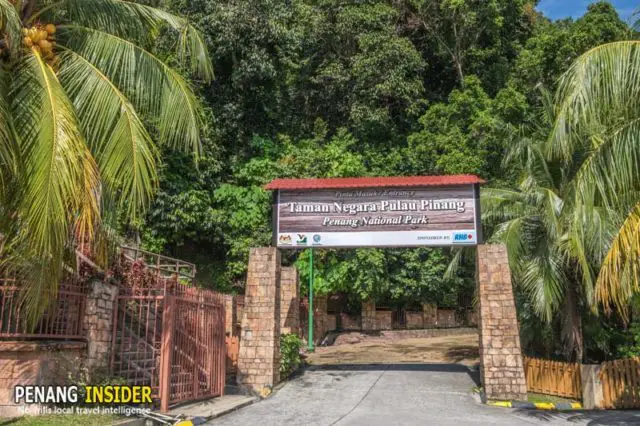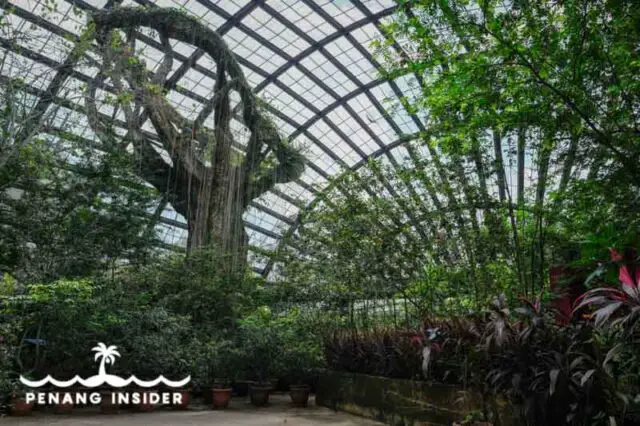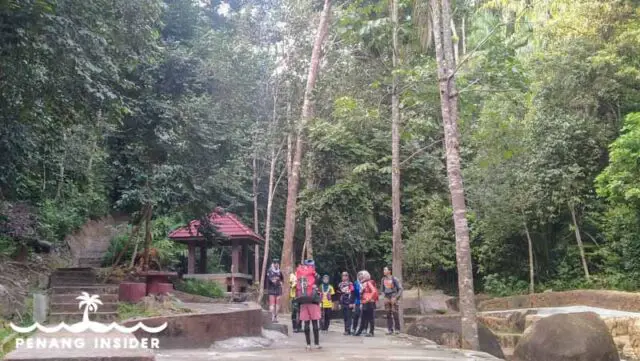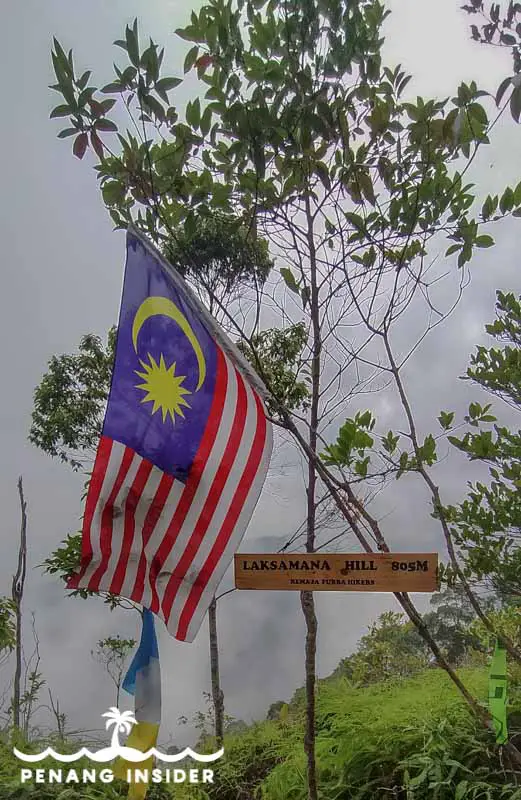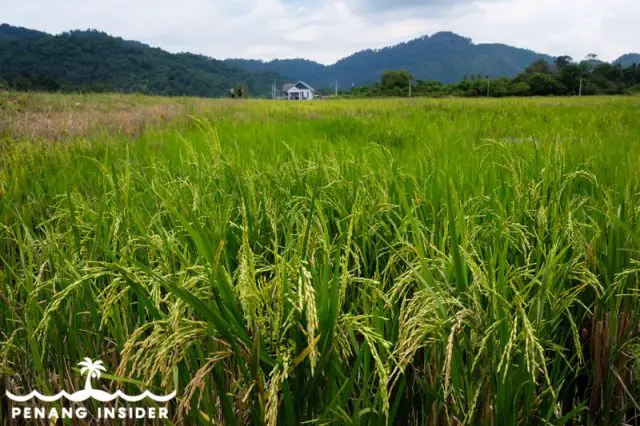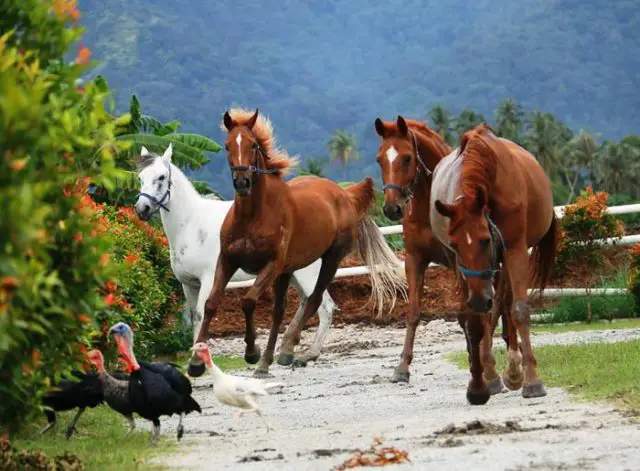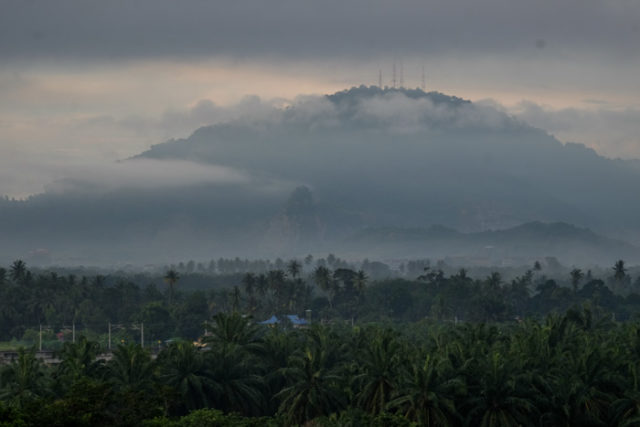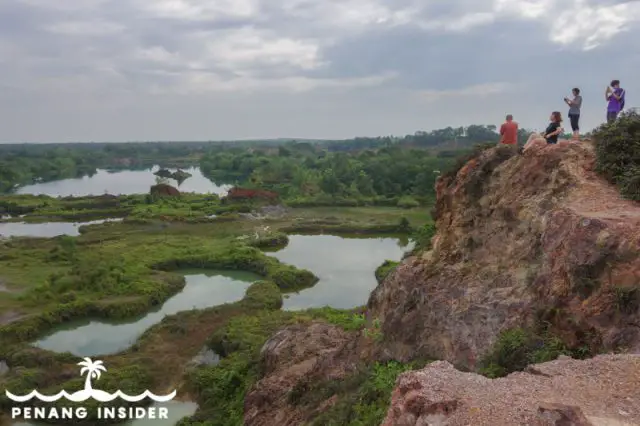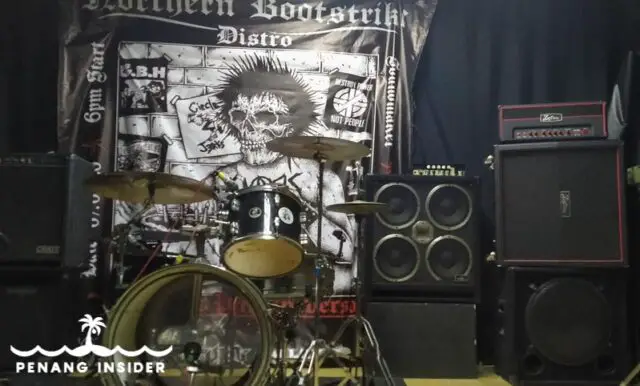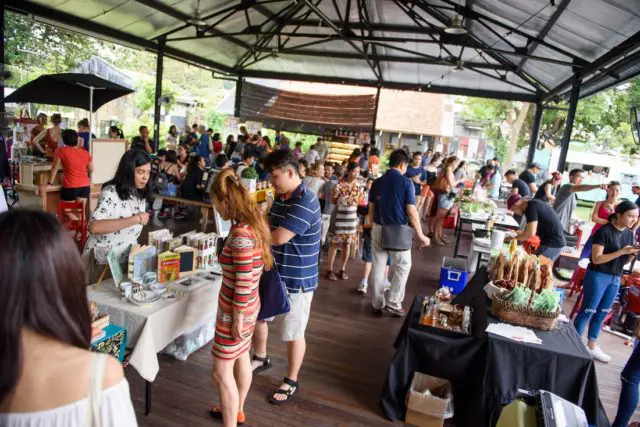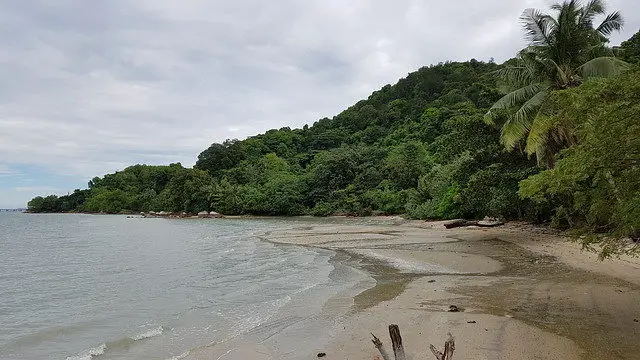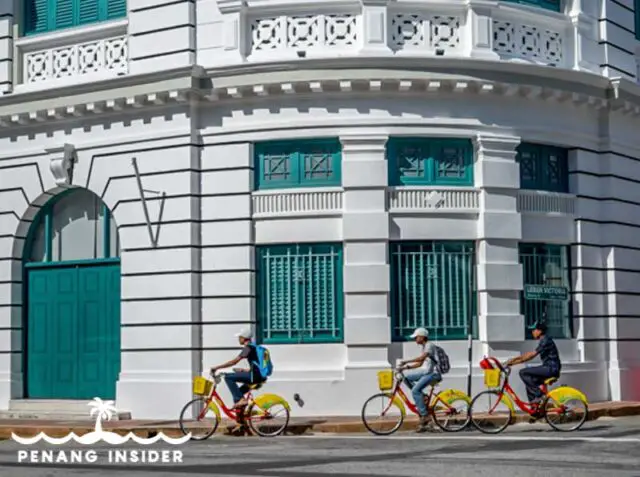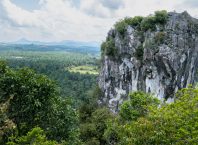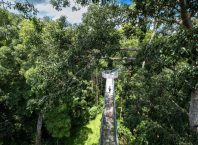
Penang is a small island, but it packs in a big number of great travel experiences. From peeking above the skyline from the top of 200-meters-high KOMTAR, to browsing the charming UNESCO-inscribed heritage streets of the city of George Town, admiring some of Asia’s best street art, relaxing on a beach, trendy Penang cafes, famous Penang restaurants, or losing yourself into a tropical jungle, “Penang has it all”, as locals like to say.
Here I’ve compiled 60 of my favourite things to do in Penang, all things I’ve personally done in my 13+ years living here. They include the most popular Penang attractions as well as ideas for where to go in Penang to get off the beaten track and see some interesting places. Trust me: you won’t find a more comprehensive & free Penang travel guide online!
I hear you: deciding what places to visit in Penang can be tough as there are so many choices of Penang attractions, but this article is the best place where to have a quick start and arrive with a clear idea of where to go in Penang so that you can hit the ground running.
The suggestions in my below Penang travel blog are organized into sections based on location and type of activities. You’ll have a George Town and Penang Hill section, a Famous Penang Attractions section, and an Offbeat Things to Do in Penang section for those who know the island well and want to experience something different.
To find out how to map out the below attractions for your visit, please start by seeing my articles on what to do in Penang in 3 days and visit George Town in 48 Hours. And if you are a night owl, here is a list of the best things to do in Penang at night.
Penang Travel Essentials
- Use Klook to get discounts and great deals for a lot of activities around Penang. I use it myself all the time.
- If you are looking to rent an apartment in Penang, start by reading my article on the best Penang Airbnbs.
- Penang has some great 5-star hotels and inexpensive boutique hotels for a special stay. But you can also find some great Penang Budget Hotels that are a great bang for your buck
- If you are a backpacker on a budget, I have a complete guide to backpacking in Penang
- If you are short on time, consider taking this half-day tour or this heritage tour.
- If you want a private car to take you around, check out this link
- There is much to learn about Penang food and Penang breakfast. There are some great cooking classes and food tours, like this and this street food jaunt
- If you are coming to Penang from Kuala Lumpur, check out this guide to know all the best ways to travel to Penang.
- If you want to discover the offbeat side of Penang, check out my complete guide to Balik Pulau.
- Likewise, there are many attractions in Seberang Perai that few people ever see.
When to Travel to Penang
Penang island lays in the tropical zone and is a destination you can visit year-round, regardless of the rainy season — roughly between September and December, but truth be told it never really rains all day, and it brings some respite to the heat.
But there are best months to visit Penang, for sure, depending specifically on the different festivals and religious celebrations you may witness. I have written a dedicated article to help you choose the best time to visit Penang.
And here you go, the list of the 60 Best Things to Do in Penang!
Best Things to Do in George Town, Penang
1Survey Penang from the Top of KOMTAR
At 232-meters of height, KOMTAR is the highest building in Penang and was extended in 2015 to reach 65 levels of height. I have written a guide to the many things to do at KOMTAR, the most popular of which is taking an elevator to the top floor to enjoy a walk on the Rainbow Skywalk, the highest glass bridge in Asia — not something you’ll want to try if you suffer vertigo. If you don’t, you may as well consider trying the Gravityz, an obstacle course with ziplines perched right outside one of KOMTAR’s top floors, and one of the highest sports platforms in all of Asia.
You can buy discounted Gravityz tickets on KLOOK here.
The views above George Town and Penang island from The TOP at Komtar are sublime, and the best time to come is right before sunset when the sun goes down, and the lights of the city flare up below you. There’s a restaurant here if you thought of bringing a date for a very special meal.
You can get discounted tickets for The TOP using this link — a good idea to avoid lines, especially on weekends.
2Lose Yourself in Little India
In a way, Little India is the heart of George Town, set between Padang Kota and the Esplanade on one side, the Butterworth ferry on the other, all encased by the backpacker enclave of Chulia Street. There are many cool things to see and do in Penang Little India, from trinkets shops to some of the best Indian food island-wide. If you are craving for samosas, masala dosa, tandoori chicken, and all sorts of southern and northern Indian delicacies, you’ll certainly find more than a restaurant to tickle your fancy — and budget. Don’t miss Nasi Kandar, Penang local rice with curries, as Little India has some of the best.
Want to visit Little India on an atmospheric trishaw ride? Check out this 3 hours tour of George Town.
Don’t forget that Little India also has some important shrines, like the Sri Maha Mariamman temple, one of Penang’s main Indian shrines, and the Nagore Dargha Sheriff, the oldest Indian-Muslim shrine built in Penang. A visit to the last songkok-maker (traditional Muslim skullcaps) and the many goldsmiths here can provide hours, if not days, of exploration and entertainment. One district you shouldn’t miss.
3Check out the famous Penang Street Art
Like it or not, Penang island has become better known for its Penang street art than its heritage. Well, what to do… we understand the modern man’s obsession with belonging and the Gram…
The very first “murals” were a series of 50-something iron-rod caricatures realized to spruce up the most historical corners of the recently UNESCO-inscribed old George Town, but street art in Penang really exploded in 2012 after Lithuanian artist Ernest Zacharevic created the “Mirror of George Town” series for the George Town Festival.
The 9 murals and installations depicted scenes of life on the island: the most famous today, “Little Children on a Bicycle”, was voted by the British newspaper the Guardian as one of the world’s best pieces of street art in 2013. The Insta-craze started shortly afterwards: it’s constantly repainted on the farther end of Armenian Street, where on weekends, hordes of tourists local and foreign literally queue up to get the same ol’ shot next to it like other millions of people have done before. Creativity, anyone?
I do believe that the commercialization and gentrification of Penang and the murals have ruined the local art scene, but some locals think otherwise. Regardless, any visit to George Town cannot be complete without having browsed at least a few of these popular murals. The wish is that the artworks would push tourists to understand and delve deeper into Penang’s history, but that’s, unfortunately, not something the average Joe on holiday wants. So go with an open mind and you know what to expect. Again, some of the art is stunning — it’s just us locals who have had enough, ahahah.
4 Try Penang Food at a Hawker Food Court
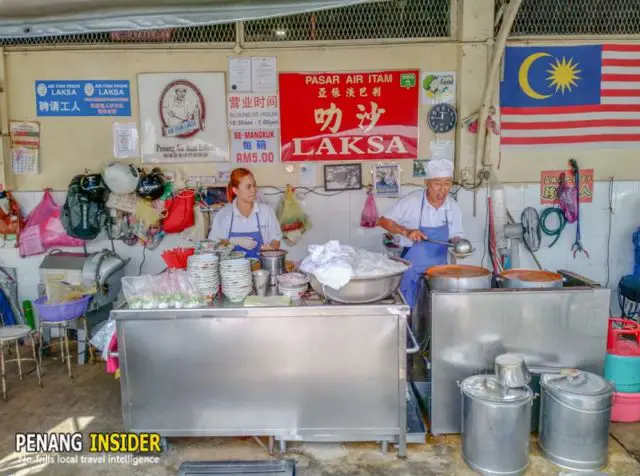
Penang was a food paradise well before Lonely Planet voted it as the best foodie destination in 2014. The variety and quality of Penang hakwer food (meaning, sold from a street cart, or inside of a hawker center, also called a food court) is mind-blowing and you really need time to get to try it all. I have written an article that lists the essential Penang food to get you started that’s a great help for those who don’t know what to eat here. But the best way is to simply trust your nose and gut, and go for what tickles your nostrils and eyes.
Even remaining in George Town, the choice is endless: from Chinese noodles of different kinds, like the popular char koaey teow, tasty curry mee, wan than mee, to Indian food and Malay nasi kandar, you won’t have to go far from your accommodation to find some great eats.
5Visit the Clan Jetties
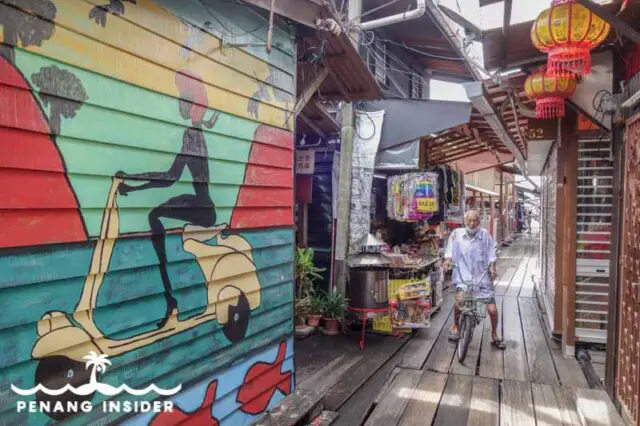
Set right on the water, the ancestral homes of the immigrant Chinese workers during Malaya’s colonial times have become somewhat of a tourist trap (avoid Chew Jetty on weekends), but they are a very scenic place, and a real opportunity to understand how life was in old Penang. History says that the Clan Jetties — each one called with one of the popular surnames of migrants from China, such as Tan, Chew, and Lee — were built to cleverly avoid paying a land tax imposed by the British colonial rulers. In fact, these big wooden homes are made on stilts over the water, so that their residents could have a reason not to pay the tax.
There has been a big deal of commercial gentrification going on here which someone called UNESCOcide, but a visit to the Clan Jetties really is a must. The homes have barely changed in a century, and the charm of walking above creaky wooden planks has remained unchanged. Until a few years ago, it was most charming to come here at night and soak the atmosphere, but as of late, the residents have imposed a 9 pm curfew to have some much-needed peace and quiet. Please respect that, but by all means, come here for a stroll — it’s within walking distance from the end of Armenian Street, where some of the most known Penang street murals are.
Want to get more out of this experience? Try this Penang self-guided audio tour, which includes a lot of history on the clan jetties.
6Take a Trip on the iconic Penang Ferry
Penang Ferry opened in 1894 as the only link between Penang island and the railway to Singapore. Believe it or not, it’s still operating despite the two bridges connecting Penang island to Seberang Perai — the mainland part of Penang state.
Penang Ferry, now under the administration of Rapid Penang, remains a very romantic and interesting way to reach George Town for the first time. It’s a no-frills trip over a very basic ferry that reaches Penang in about 20 minutes — don’t expect any luxury, and bring a little sense of adventure.
Even if the original fleet has been substituted in the midst of 2020, this is the most interesting way to travel between the Malaysian mainland at Butterworth and George Town. I have already written a complete guide to taking the Penang Ferry so you may find all the timings, costs and details on that page. Rest assured that by floating across the Straits Sea, the view of George Town’s ever-growing skyline right in front of you, is an experience to have at least once on a visit to Penang island.
7Visit one of Penang’s Night Markets
Food, trinkets, and cheery people: what’s best doing on an evening, after your fill of great Penang food such as the famous Penang Laksa? Night markets are simple yet celebrated places where you can get away from tourists and have a more down-to-earth local experience. This article tells you about the best Penang night markets, when they open, where they are, and what you can buy there. It’s best to go on a light stomach, so that you may enjoy a bowl of local food as you browse for home appliances — souvenirs are not sold around here.
8Go for a Trishaw Ride
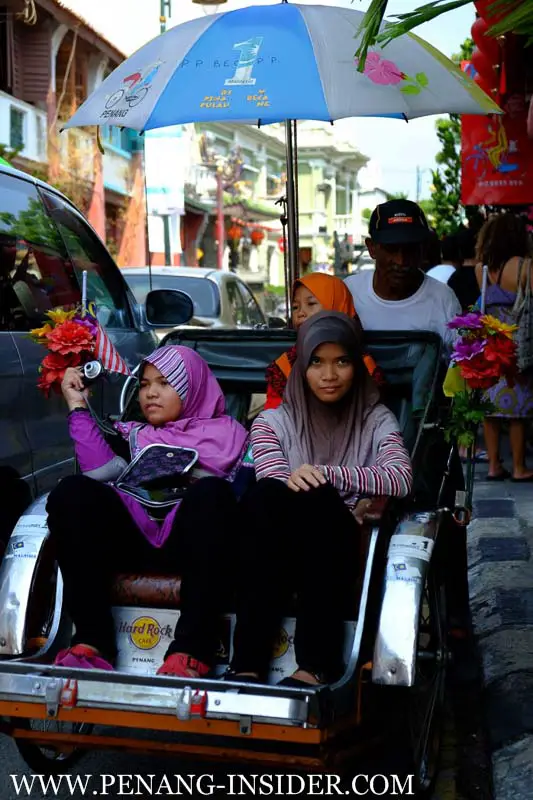
Trishaws were the main form of transportation in old Penang, and today, the 200-something last remaining trishaw drivers are a real living heritage. It may be a bit touristy, but sitting for a half hour or more as the man cycles you around town, oftentimes dispensing some insider secrets that only street-savvy men like himself know, is a delightful Penang experience.
To make sure you get a fair price and a trishaw at the best time to suit your holiday (consider that right before sunset, let’s say starting at 6.30 pm, is a very good time to see George Town switch gears into the night), we recommend you book your trishaw ride in advance using KLOOK at this link. Avoid surprises and get the best bang for your buck.
9Have a night out at one of Penang’s famous speakeasy bars
We have already compiled a list of 30-something things to do in Penang at night, and visiting a speakeasy bar is definitely a good one. Fancy finding your drink by hitting a Wing Chun dummy like Ip Man, pushing a hidden partition in a dimly-lit shopfront, or maybe even entering through a refrigerator? Well, Penang has got you covered.
Exactly what it means, “speakeasy” hints at the world of hidden bars and secretly hushed entry passwords. The whole thing has been done to death in Penang, in the sense that now there are more secret bars than one can handle, BUT some of them are pretty good for a chilled night, and most make a fun surprise for friends who have come to meet you from outside town.
The first to launch the trend was Magazine 63, an Old-China-themed bar with waiters dressed like Chinese coolies and booze served in traditional rice jars. There are many now, the most notable being Out of Nowhere, accessed by a refrigerator, the cool Backdoor Bodega, a really small and funky place that doesn’t sell drinks, but drink-themed pins, and 12 Senses, with its fun martial art-themed tricky entry stunt. Definitely try one if you feel like having a night out.
10Party with Backpackers on Chulia Street and Love Lane
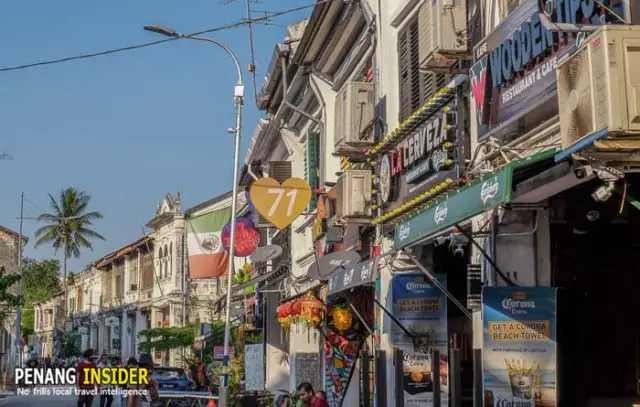
Once the thriving home of the Indian community of Penang and a lane for mistresses and prostitutes, the intersection of Lebuh Chulia and Love Lane is Penang’s equivalent to any cookie-cutter backpacker haven on Southeast Asia’s Banana Pancake Trail. It’s certainly OK for a night out: you’ll find plenty of bars and some of Penang’s most famous western restaurants, all peppered with coin laundromats and everything else a foreigner needs to feel closer to his kind and the comforts of home. But if it’s a local experience you are looking for, you may better look elsewhere — the majority of locals don’t really go drink here.
This said the place is OK for a stroll, grabbing a bite in a casual, shabby-chic atmosphere, and meeting travelers passing through.
11Check out a Museum (or even 25, if you fancy…)
After street art, George Town has seen a proliferation of… museums. Yes: and there are more than we can remember. From the Wonderfood Museum, with its quirky larger-than-life replicas of Penang’s most famous dishes — a good place to go in Penang with Kids —, to the Ghost Museum and the Insta-focused 3D Trick Art Museum, where you’ll be able to reach the highest level of selfie enlightenment, the choice is endless — and often poor.
If there is one museum that we feel like recommending that has to be Penang House of Music, set inside of KOMTAR. Curated by local musician and connoisseur Paul Augustin, the House of Music offers a unique insight into another of Penang’s main creations: popular music. Did you know that P. Ramlee, the father of Malaysian pop music, was born in Penang? His legacy has inspired decades of Malaysian rock and roll, hard rock, rock kapak, metal and punk, and you’ll find all the roots here. Starting from traditional bangsawan to the age of the radio, the British influence, and the arrival of rock and roll, Penang House of Music is a delightful introduction to all things that rock in Malaysia. Don’t miss it.
Famous Penang Tourist Attractions you Should Visit
Given its rich history, Penang has a lot of important buildings, temples, and clan houses that testify to its rich ethnic and historical legacy. Many are in George Town, but other parts of the island also treasure some very stunning places you should try to visit.
12Kek Lok Si Temple
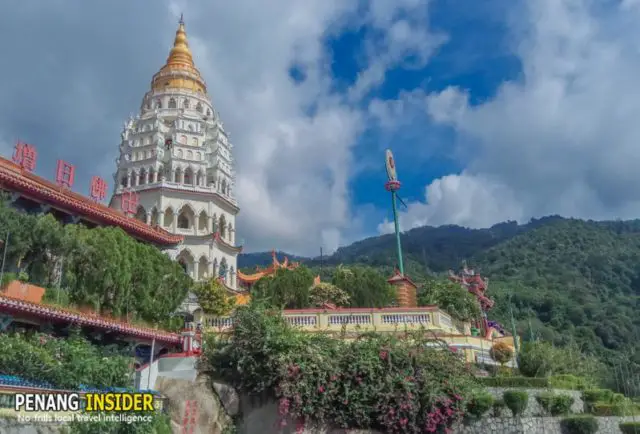
Penang’s most striking temple is Kek Lok Si, perched on a side of Penang Hill, and hosting a 36.57mt-high statue of Goddess of Mercy Kwan Yin. It’s the largest Buddhist Temple in Malaysia and one of the biggest in Southeast Asia, and it’s particularly nice to visit right before Chinese New Year (in Jan/Feb every year) when it’s decorated with hundreds of beautiful red lanterns and colourful LED lights. For more information, read our ultimate guide to visiting Kek Lok Si Temple, and don’t forget to stop at Air Itam market to try one of Penang’s best laksa.
You can visit Kek Lok Si comfortably as part of this tour of George Town.
13Cheong Fatt Tze Mansion
The Blue Mansion of Penang tycoon millionaire Cheong Fatt Tze is a beautiful example of Straits Chinese architecture and one of George Town’s most iconic buildings. You can come here for a tour, but also eat at their fine dining restaurant Indigo, or stay overnight in one of their beautifully decorated rooms — certainly one very atmospheric way to spend a night in town.
The place is super photogenic and was used as a set for many films, which as of late include the popular mahjong scene in the blockbuster Crazy Rich Asians.
You can book a discounted tour of the mansion, a night stay, and included breakfast spread via our partners at KLOOK. Click here for details
14Penang Peranakan Mansion

This green-hued heritage house in Little India is the place to come learn about the mixed ancestry of the Peranakan, or Baba-Nyonya — people of mixed Chinese and Malay blood. This 19th-century mansion has been now turned into a very interesting museum housing 1000-something objects and furniture of the time. This building also contains the Penang residence and office of Kapitan Cina Chung Keng Kwee, who normally lived in Taiping, where you can see exquisite Chinese carved wooden doors and Scottish ironworks. A very interesting time journey to learn about a lesser-known Malaysian culture, and a very atmospheric place that, no wonder, is often hired out for events or used by local photographers to set up pre-wedding shoots in Penang.
Want to know more about Penang heritage with a knowledgeable local guide? Check out this perfect half-day tour.
15Fort Cornwallis and the Esplanade
Perched on the easternmost corner of George Town along the walkable Esplanade, Fort Cornwallis was built in 1786 century by the East India Company helmed by Captain Francis Light to protect the island from attacks by the pirates of Kedah, on the opposite side of the coastline. It’s the largest standing fort found in Malaysia, although the cannons that can still be seen here never engaged in combat during its history. There is also a lighthouse next to it, the second oldest in Malaysia, which is an interesting sight to see.
These days the Fort has transformed into one of Georg Town’s best spots for an atmospheric drink. There’s a 5RM entry fee, but if you have a drink at any of the several bars and bistros, keep your receipt and you’ll exit free of charge. There’s also the fine-dining restaurant Kota where you can get a variety of foods, from high-tea to tapas, Western and Asian cuisine. The menu’s speciality is Baba-Nyonya style, and the ambience is casual chic — we believe it’s a better choice for a special dinner than an expensive afternoon drink.
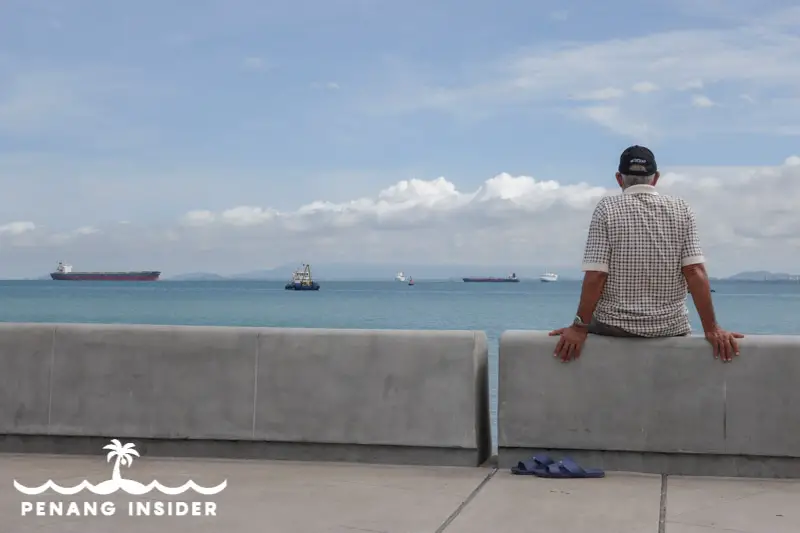
Next to the fort is Padang Kota, a well-tended grass expanse next to a sea-facing walking promenade and Penang’s impressive colonial City Hall. This is a very nice place to come for a stroll or while away time at sunset. Many Malay families come here for picnics, too, so you may join in the fun.
16Visit Leong San Tong Khoo Kongsi
The grandest Chinese clan house in Malaysia sits inside a courtyard off Lebuh Cannon and is one of Penang’s most important sights. It is a part of the goh tai seh (five big clans), the Khoos from Xiamen in the Fujian province of China, that formed the backbone of the Chinese immigrant community in Peninsular Malaysia. Located at the center of granite-paved Cannon Square, the clan house’s intricately carved pillars and gilded curved roof with four towering stone carvings are a real sight to behold.
These days, Khoo Kongsi can be visited with a small entry fee, and it is also often used as the backdrop for events such as lion dance on stilts or Chinese opera and martial arts showcases when access to Cannon Square is free of charge.
17Take a peek at Southeast Asia’s Oldest Anglican Church
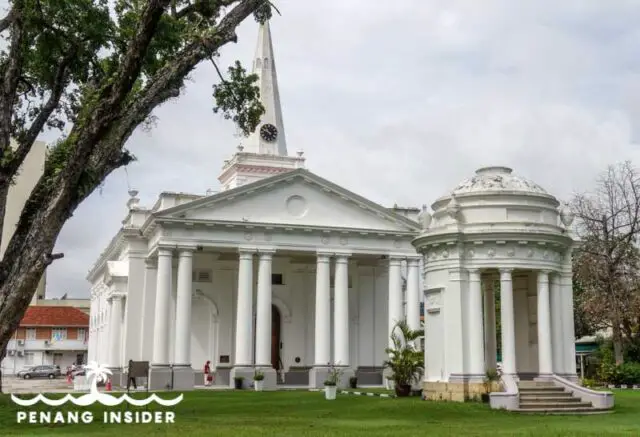
Sitting at the center of a well-manicured park at the end of Kapitan Keling Road, St. George Church is a 19th-century Anglican church and the oldest found in Southeast Asia. Opened in 1819, it celebrated 200 years of uninterrupted service in 2019.
A visit is very recommended: the church has an interesting neoclassical facade resembling a Greek temple topped by a pointed tower upon which the cross dominates above the quaint green surroundings. If you go inside, you’ll be able to walk on a mezzanine and see the whole building from a vantage position. The ancient organ here can still make some proud sounds, so try to time your visit during a service.
18Visit Penang’s stunning Town Hall and City Hall
Set on the left side of Padang Kota, Penang City Hall dominates over the Esplanade with its white-washed Victorian facade, neo-baroque colonnades and arched windows, and a characteristic rooftop silhouette. Opened in 1903, today the Town Hall houses the Penang Island City Council offices and was built to expand the space of the adjacent Town Hall, completed in the 1880s. The Town Hall is George Town’s oldest municipal building, and back in the day also used to be the place where the ruling Europeans congregated for their social events. In 1999, the Town Hall was one of the settings for the movie Anna and the King.
Walking along this road today, you can’t avoid feeling a sense of grandeur as the two buildings, still in perfect condition, exude a prominent sense of history and are a delight to photograph, too.
19Take a Stroll on Armenian Street
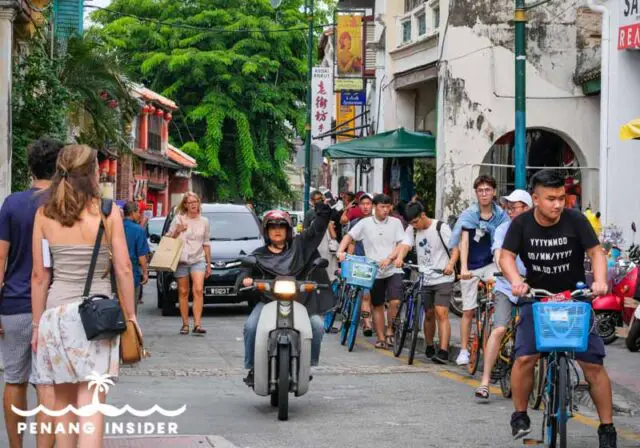
Armenian Street has become George Town’s tourist center, lined with all sorts of little trinket shops, art galleries, cafes, and the infamous “Little Children on a Bicycle” mural jotted at one of its ends. But come after dark, and the place still retains the charms it had just a decade ago: a beautiful narrow street punctuated by some of George Town’s most important clan houses and temples. Not counting the charming Armenian Park, a very nice green space to sit on a bench and ponder life passing by for a while.
Penang’s Armenian Street had great historical significance because, after starting as a Malay settlement, in the 19th century it changed into being inhabited by a majority of Armenian and Chinese, giving the area a distinct multi-cultural character that has come to define Penang. It was here that in 1910 Sun Yat-sen organized the Penang Conference in the house that today still functions as his memorial museum in Penang, raising the $8000 which served to topple the Qing Dynasty in China.
Don’t forget to visit the Seh Tek Tong Cheah Kongsi, another beautiful Penang clan house that was recently renovated and has an ample garden and a double-story Chinese-temple-like main building, and the Hock Teik Cheng Sin Temple, also known as Poh Hock Seah, that traces back to 1844. Set inside a gated courtyard, this temple testifies to the history of the Penang Riots of 1867, open warfare on the streets that led the British to ban all Chinese clan associations as “secret societies”. On the ground floor of this temple, you can still see the concealed entry of a tunnel that members could use to leave or access the premises undisturbed. On the first floor, a wooden mezzanine towers above the courtyard and there’s a beautiful shrine to the patron deity Sin Long Siang Tay with wooden carvings painted in gold.
The Choo Chay Keong Temple — also fondly called Yap temple — set opposite the Hock Teik Cheng Sin Temple on the corner of Cannon street is another remarkable building with intricately carved stone pillars and a striking emerald green gilded rooftop.
20Pray at the Goddess of Mercy Temple
In George Town proper is the Goddess of Mercy temple on the edge of the very interesting Penang Little India. Fronted by a square where devotees go pray and light up joss sticks, it’s one of George Town’s oldest temples and was built in 1728.
Legend says that during the Japanese occupation of Penang in World War II, no bomb could ever destroy it because of the goddess Kwan Yin. Today it’s a great place in George Town to come see Chinese devotees pray and observe a whole world of characters, from the long-term beggars to the Hare Krishnas who bring them free food, to the old aunties selling joss sticks and predictions for the Chinese New Year ahead. It’s also very photogenic, too, with its open square and two ash burners that tower in front of the gates like black stone guardians.
21See one of the world’s largest reclined Buddhas
Penang wouldn’t be the smorgasbord of cultures it is if it didn’t have at least one Thai Buddhist temple, and the Wat Chaiya Mangalaram in Pulau Tikus is the most important, oldest Malaysian Siamese temple in the state. The main feature here is the 32-meter-long reclined Buddha statue, one of the largest in the world, that lays over a columbarium where the burnt ashes of the cremated are housed. There are stupas and other colorful statues of Yaksha and other mythical creatures.
The temple is a focal point of Thai celebrations such as Songkran and Wesak Day in honour of Lord Buddha. Just in front of it is the Dhammikarama Burmese Temple, another very important in Penang, with its striking collection of Buddha statues that imitate the Buddha figure as depicted around the world, from Cambodia to Afghanistan to India and beyond.
22Soak the colonial charms of Beach Street
Beach Street runs from Fort Cornwallis all along the coast, encasing George Town, and historically was one of the oldest streets in George Town. Established in 1786, it quickly became one of the most thriving streets for business in old Penang. Part of that legacy is of course still visible today in the string of beautiful buildings — most converted into banks — that line both sides of the street, making it a magnet for couples on their pre-wedding photoshoots. A few notable to remember are India House, the Beach Street Fire Station, the Whiteaways Arcade, the George Town Dispensary, and the Khoo Si Toon Keng Tong Kongsi, a lesser clan house of the Khoos.
In the past few years, the street parade Occupy Beach Street came to enliven this area on Sundays, bringing in all sorts of arts and stalls where locals sold their wares. One of the main access points to Penang Little India is also along this famous road.
23Experience Islam at the Masjid Kapitan Keling
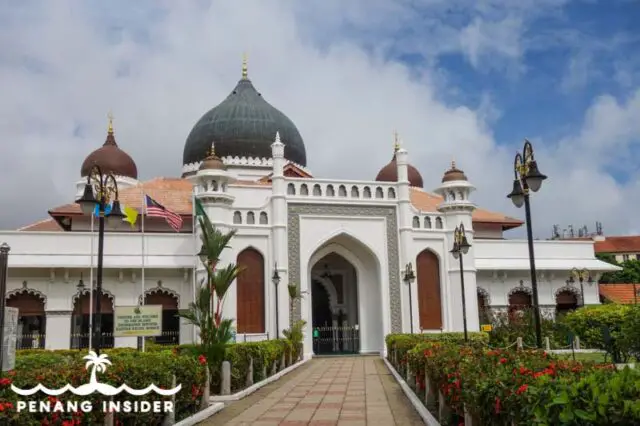
The Masjid Kapitan Keling in central George Town is a special mosque, and not only because of its magnificent black domes, sleek architectural style, and white walls. It’s mainly because it was built in the 19th century by Indian Muslim traders in the multi-ethnic port of Penang. Its significance within the UNESCO-inscribed old city of George Town is that this was the first Islamic institution built in the city’s Tamil neighbourhood. “Keling”, in fact, was a Malay term to indicate persons of Indian origin, and even if today it is considered a racist slur, at the time it wasn’t.
You can visit the Masjid Kapitan Keling mosque outside of praying times when volunteers will be happy to show you around and answer your questions. Penang is very hot, but don’t worry, for if you will arrive without proper long clothes, the volunteers will be offering you a tunic to cover up and be allowed inside the Masjid’s grounds. Please don’t get impatient if some may go beyond their duty trying to convince you to convert to Islam.
24Climb to the Arulmigu Balathandayuthapani Waterfall Temple
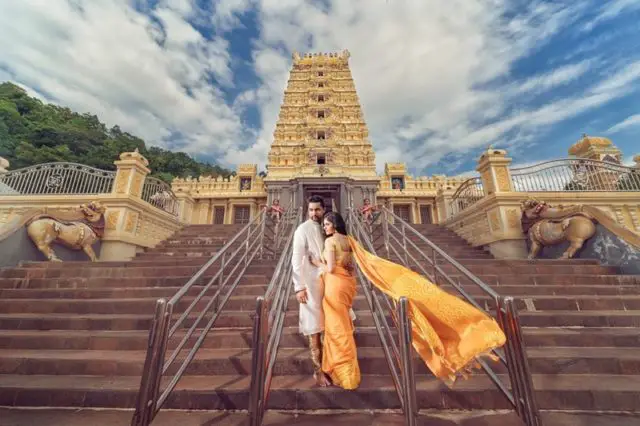
Set on a flank of Penang Hill in close proximity to Moongate and the Botanic Gardens, the Waterfall Temple, with its striking white gopuram, may be the most beautiful of Penang’s Indian temples. For this reason, it is often the backdrop of pre-wedding photoshoots in Penang.
This temple is the epicentre of the dramatic Tamil festival of Thaipusam, when local devotees, with lips and cheeks pierced by skewers in honour of the Lord of War Murugan, walk barefoot from the centre of Penang Little India and end their pilgrimage here. This is a very busy and yet spectacular time to visit, but you can come any other time, and enjoy the peace of the surroundings sheltered by nature.
25Tuck toes in the sand at Batu Ferringhi
On the northern side of Penang, Batu Ferringhi beach was once a hippie hangout and today harbors most of the island’s high-end hotels and resorts.
The area is frankly touristy and overdeveloped, but the beach, which is public but accessed from the hotels, is still one of Penang’s most visited — albeit not the cleanest among all other 20-something Penang beaches.
Still, I think you should visit Batu Ferringhi at least once, maybe to have a sundowner at one of Penang’s famous beachside hotel bars, or even better, to catch a purple Penang sunset this part of the island is very famous for. Leave the watersports for the Arabian tourists and you’ll be fine.
READ MORE Best Hotels in Batu Ferringhi
26Marvel at Penang Floating Mosque
The Floating Mosque is Tanjung Bungah’s most iconic sight. Opened in 2007 and built on stilts over the sea with great choreographic effect, it came to be this way to accommodate the larger number of Muslims where there was no space on land.
Non-Muslims can appreciate this mosque best at sunrise and sunset when its prominent minaret and colorful rooftop glitter against all the hues of pink, red and yellow.
27Play Monkey at ESCAPE Theme Park
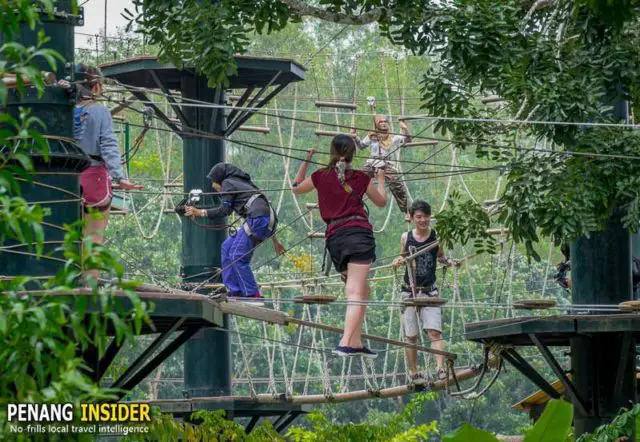
This theme park in Teluk Bahang is perfect for a full day of action-charged activities. It’s a beautiful set of ziplines (pulleys connected to stainless steel cables, and attached to the trees) set into a patch of rainforest for maximum play effect. Kids and adults can come here to play together, climbing platforms and swinging like monkeys across some of Teluk Bahang’s most pristine canopy. Escape also has a newer park, too, Escape Adventureplay, that’s a good alternative to the beach, with water slides and all those fun water activities. The park has the world’s longest mat waterslide, a staggering 1,111 meters long and a full three minutes long, suspended among the trees.
It’s open from Tuesday to Sunday from 10 am to 6 pm and closed each Monday for maintenance. Check more on Escape’s Official Website
There are several categories of tickets and online discounts, starting at RM97 per child up to 12 years old and seniors, while adults pay RM147. If you want an RM17 discount, you can buy your Escape Tickets online from our partner Klook at this link.
28Learn about World War II History at Penang War Museum
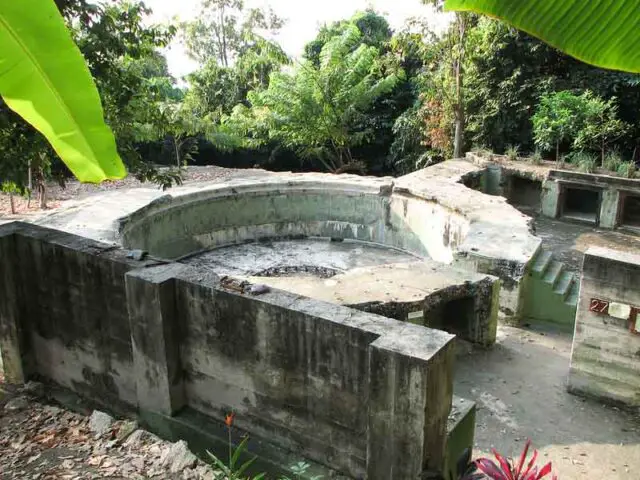
Malaysia’s own War Museum in the southern Penang district of Batu Maung testifies the Penang’s history of occupation by the Japanese during World war II. But even if the museum’s management doesn’t like to admit it, Penang War Museum is better known around the world for having been portrayed in several documentaries as a “haunted museum”.
These are certainly urban legends, but what is true is that Penang really succumbed to marauding Japanese troops right at this fort, that the British built on Bukit Hantu (literally and ironically, it translates to ‘Ghost Hill’). National Geographic featured Penang War Museum among the most haunted places in Asia, telling the spooky story of merciless Japanese colonel Suzuki and the prisoners of war he tortured and killed here – the bullet holes in the walls serve as a grim reminder.
But beyond the spooks, a visit to the Penang War Museum today should be a good lesson to learn about the resilience of local Penang people against the invaders. It also offers a 100 Feet Underground Tunnel that’s guaranteed to test your nerves.
29Have a Go at the Snake Temple
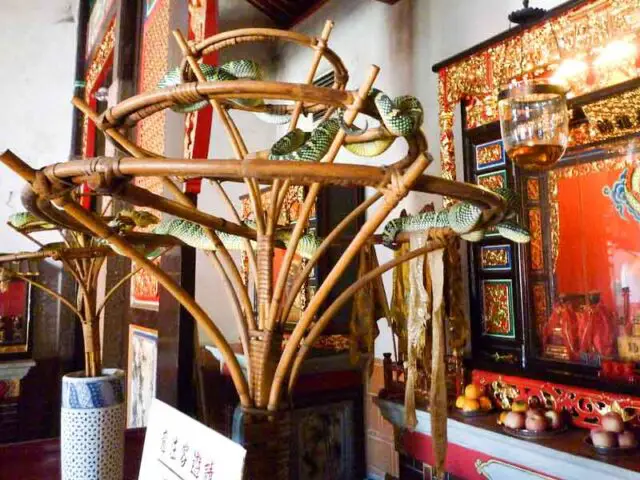
This temple situated only 3km away from Penang Airport was built in 1850 in honour of Chor Soo Kong, a famous Buddhist monk and healer. Devotees come here as far as Singapore, Taiwan, and China to pray to him, but the place has become somewhat of a tacky tourist attraction because of the tame snakes that are found there.
Legend says that Chor Soo Kong used to shelter snakes inside of this temple and that after his death, they started to come on their own. What is true, however, is that a few snakes are always hanging on wooden poles set at the sides of the main altar. Don’t come with high expectations, but by all means, the place makes for a good photo opportunity.
30See Penang Avatar Secret Garden
Did you know that Penang has a place that looks like the Tree of Souls of the blockbuster movie Avatar? It’s Penang Avatar Secret Garden in Tanjung Tokong, a place that has become a very popular attraction.
The main thing to see is the landscaped park set on the hill behind the Thai Pak Koong temple. Its centrepiece is, of course, the big “Tree of Souls” decorated with LED strings. It comes alive as soon as darkness falls. The tree soars above a life-sized checkerboard, and there are stairs and a wooden boardwalk to complete a quick circuit around the tree and back down. I have written an ultimate guide to visiting Avatar Penang Secret Garden you will find very useful.
31Take a dip at Monkey Beach
Perched on the westernmost corner of Penang Island in the beautiful Penang National Park, Monkey Beach is one of Penang’s most popular beaches. It takes its name from the population of macaques that live in the forest behind the crescent of sand, but these days you’ll probably see more day-trippers than primates, to be honest.
The tourists have brought development, and there are a couple of bars here like Lazy Boys Cafe and Tiger Monkey Bar & Leisure where you can buy cocktails and stay for sunset — and also camping, too, at Lazyboys, where you can also rent A-framed huts.
Swimming technically is not allowed all over Penang because of the box jellyfish hazard which can be deadly, but people usually dip at Monkey Beach. Do so at your own risk.
You can hike to Monkey Beach from the entrance of Penang National Park (remember that a group of more than 10 people need to get a guide from park headquarters) or, if you are unfit, lazy, or in a rush, can get on one of the shared boats that ply the route as soon as they fill up. They should cost RM50 per trip to share among passengers.
If you want to do it all in comfort from George Town, we recommend taking this Monkey Beach tour on KLOOK that offers pick-up from your hotel.
READ MORE – Ultimate Guide to Visiting Monkey Beach
Best Things to Do on Penang Hill
Straddling the central part of the island, Penang Hill was a colonial hill station and is the best place to feel the nature of Penang today. Hikers will love leaving George Town to spend hours, if not days, trawling the dozens of paths that crisscross the hill. For those who just want to have a trip to the top, a funicular train whisks visitors up in a few minutes. Read our ultimate list of the best things to do on Penang Hill, too.
32Enjoy Penang Nature at the Botanic Gardens
At the bottom of Penang Hill, and within walking distance from Moon gate, are Penang Botanic Gardens founded in 1794. They are said to be the closest gardens to a city centre in the world, as they are only about 10min drive away from George Town — you can take a Grab car there. It’s a perfect place to stroll and observe some of the region’s, and the world’s, diverse flowers and trees.
A circular paved road goes around the Gardens and is popular with local joggers. You can take a walk and spend time in the many gardens and greenhouses that host a variety of endemic plants. For those who want to have a quick experience of the forest, a staircase leaves the gardens to Station 46, a popular rest stop for hikers. It’s a climb and you’ll get drenched in sweat for sure, but the views of the trees are superb.
33Take the famous Funicular Train up Penang Hill
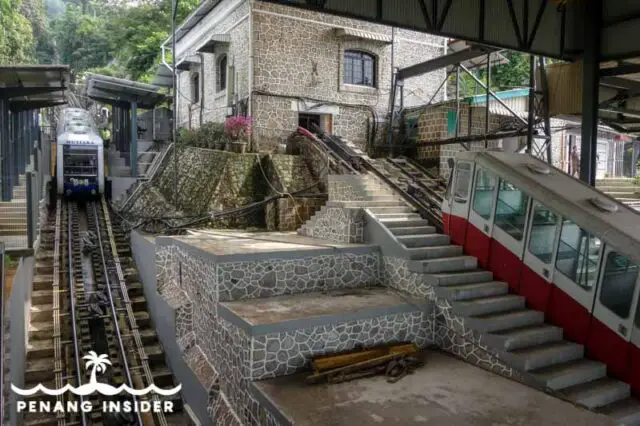
The original trains that have whisked passengers from the bottom to the top station of Penang Hill since 1923 have been upgraded in 2011, but getting up this hill station by train remains one of Penang’s main attractions. The train takes less than ten minutes to go up, sometimes stopping at the Middle Station en route, where in the past it was necessary to switch trains. The views over the thicket, Air Hitam and George Town in the distance are unique from this rail track. To be honest, at 30RM the ticket is quite steep for tourists, but the other option is walking up — and that will take you more than two hours one way. Here is our ultimate guide to visiting Penang Hill.
You can buy train tickets online on Klook to save time at the bottom of the hill where queues are normal, especially on weekends.
34Fly across Penang’s Oldest Forest on a zipline
Penang Hill has a very cool zip line, the 5-course Flight of the Colugo zipline. Developed to give guests a feel for one of Penang’s oldest rainforest canopies — a staggering 130 million years old — this new attraction sends visitors gliding above the thicket like flying lemurs (the “colugo”, as the name suggests).
The complete Flight of the Colugo experience consists of a 5 zipline course which can be completed in about an hour. The cost is RM105 per person and includes equipment rental and guides. The “Honeymoon Zip” is a quick teaser on a single tandem zipline, and costs RM32 including tax. It’s an exciting 80mt-long single tandem zipline over a 5mt-high drop that gives guests one first look at the beautiful rainforest.
35…and then visit the rest of the Habitat
Flight of the Colugo zipline is a part of the Habitat, an interesting forest walk along a colonial irrigation path that crisscrosses Penang Hill’s best-preserved patch of rainforest. I have already written an article on 7 good reasons why you should visit the Habitat Penang Hill but in brief, it has Penang’s highest viewpoint at the Curtis Crest walkway, and a 230-meter-long canopy walkway, the Langgur Way. It soars 40-meters above the forest floor underneath, and it’s been built entirely tree-friendly, without using any direct rigging of the steel cabins on the tree bark.
You can buy a discounted Habitat entry ticket on KLOOK to avoid queues and save some ringgit.
36Have a power hike to Station 5 via Moongate

There’s nothing better than hiking to feel the mesmerizing power and sounds of Penang Hill’s forest. A popular Penang Hill hike starts at Moon Gate, the former entrance to a millionaire’s home. You can follow a concrete staircase up to the hill, which we don’t recommend, or strike off on a very interesting side jungle path that is called Wild Boar Trail. I have written a detailed guide on how to hike to Moon Gate Station 5, a popular hiker rest stop, via the Wild Boar Trail.
Moderately fit people should complete the hike in 30–45 minutes one way, allowing some time to rest and enjoy nature and the free gym machines at Station 5. It’s best then not to strike off later than 5.30 pm to return down to Moon Gate before dark.
37Take the Penang Hill Hiking Trail that Only Locals Know About
Tourists take the funicular train up, while local hikers love to get up to Penang Hill, or at least to the Middle Station, on foot. There is one beautiful hike I have described in this article that will take you from the Hye Keat Estate up to Penang Hill Middle Station.
The trek is completely paved and it’s possible to do it also by bicycle or small motorbike, but we believe that walking it is absolutely the best way to go. The views from the top are amazing, spanning from Kek Lok Si Temple to George Town and across the Straits Sea to Bukit Mertajam and Kedah state.
38Find a slice of Myanmar on Penang Hill
You would think you just stumbled upon the Golden Rock of Kyaiktiyo in Myanmar, but no, you are on Penang Hill, walking from Hye Keat Estate to the Middle Station. You can’t miss them: take a side path on your right, and you’ll soon find yourself on a side of the hill filled with dozens of golden Burmese stupas. They are part of a small Buddhist Temple here, and are a very nice hidden spot to visit on Penang Hill — and tell your friends you have been to Burma instead!
Things to Do in Penang for Nature Lovers
39Discover Penang National Park
The northwestern corner of Penang island is enveloped in the thick jungle and beaches of the world’s smallest national park at Teluk Bahang. A visit here offers a few interesting hiking trails, monkeys, beaches, and a lot more, including one of the world’s few meromictic lakes — meaning a lake where fresh and saltwater don’t mix but coexist in layers.
Penang National Park is a perfect place to see and experience the wild side of Penang, the other side of the moon compared to the hectic streets of George Town.
40Look for some strange and cute Malaysian Animals
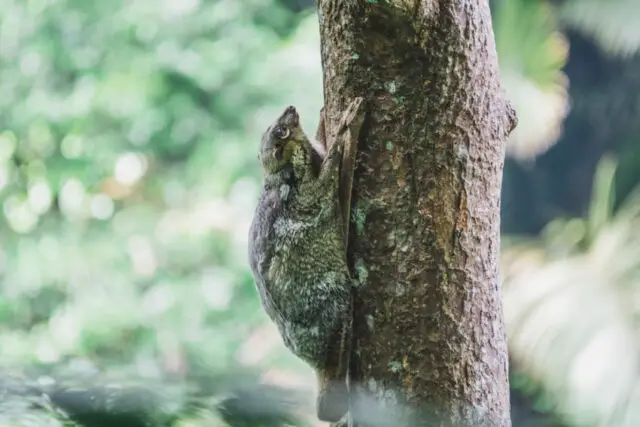
The jungles of Penang hide at least 13 species of Malaysian animals including rare ones such as the flying lemur, the Sunda slow loris and the giant red squirrel. Some of them, like the long-tail macaques, are pretty easy to spot, but you must be very lucky to find others.
The Botanic Gardens and Penang Hill are the obvious places to start looking — but remember that, whatever you find, keep your distance and don’t disturb them in their habitat. Most importantly, do not feed monkeys or any other animals. If you do, you are just an idiot tourist who doesn’t know anything about nature and the world beyond a shopping mall, and there are no excuses for your ignorance!
41Meet a million butterflies at ENTOPIA
Formerly called Penang Butterfly Farm, ENTOPIA is one of Teluk Bahang’s best attractions. Read our full review of ENTOPIA here. In brief offers a much larger space to observe insects, creepy crawlies and other small animals. Take your time to stroll inside Natureland, a living garden vivarium with 15,000-odd free-flying butterflies, or browse the Cocoon, two floors of learning exhibits, and indoor activities all dedicated to insects and bugs. It’s a great place to visit in Penang with kids but is certainly also educational for people of all ages.
Admission prices are RM69 for non-Malaysian adults, and RM49 for children and seniors, and include an all-day access pass. But we are sure you’d love to use a 10RM discount by buying your Entopia tickets directly from our partner Klook.
42Enjoy the Rainforest at Taman Rimba
Right next to ENTOPIA is Taman Rimba, a 32-hectare natural park that serves as a great introduction to Penang and Malaysia’s rainforest. The park is equipped with all sorts of picnic areas, a forestry museum, and a decent number of hiking trails, some of which connect with other hiking circuits via Laksamana Hill until Penang Hill. The beauty of Taman Rimba is certainly its lush forest, some of the thickest in Penang. You can consider swimming in one of the many holes here, or bring a tent and camp overnight. Arrange your stay at the park headquarters.
43Relax at one of Penang’s Best Beaches
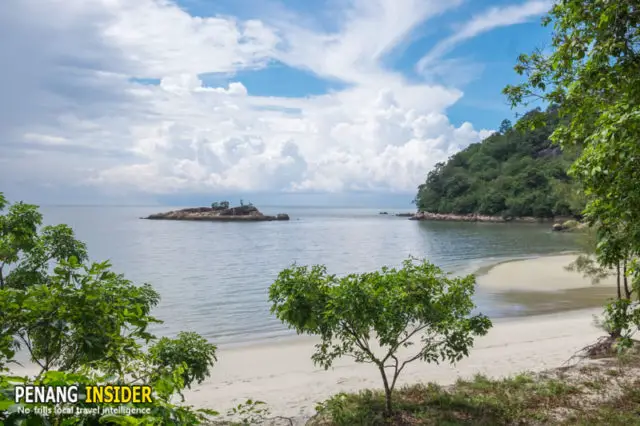
Penang is an island, of course: to be frank, Penang beaches are not the best in Southeast Asia, but there are definitely a few hidden gems worth visiting. For example, on the southern side of Penang island, the areas of Balik Pulau and Teluk Kumbar have some quiet, long beaches such as Pantai Pasir Panjang and Gertak Sanggul, with their interesting fishing community and great seafood.
On the northern side of Penang, Batu Ferringhi beach was once a hippie hangout and today harbours most of the island’s high-end hotels and resorts. Penang National park at Teluk Bahang has more opportunities for nature and a few famous beaches like Monkey Beach and Pantai Kerachut, which have a small turtle sanctuary. Read more details on our detailed guide to Penang’s 20 Best Beaches.
44Visit the Tropical Spice Garden (and take a cooking class)
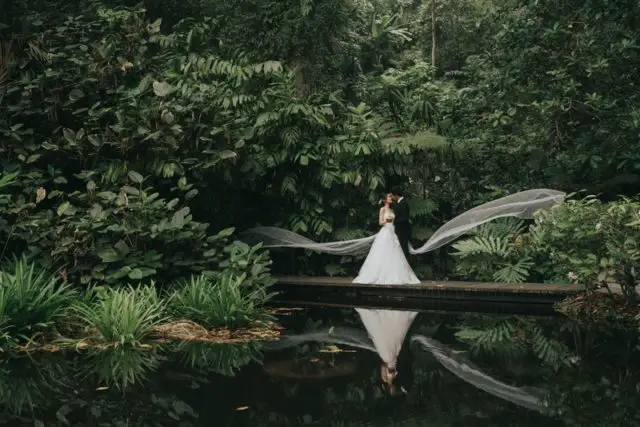
Set in a beautiful location between the sea and a forested hill, the award-winning Tropical Spice Garden is a collection of tropical plants curated by local artist Rebecca Duckett-Wilkinson. The garden is not only perfect as a location for pre-wedding photography, but also to take your kids on a discovery tour of some of Malaysia, and Southeast Asia’s, rarest species of plants.
Their Poison Garden is a very instructive walk among poisonous plants, whose uses and misuses are richly described with educational panels. We suggest you get an audio tour for yourself and your kids, in order to maximize your fun and learning experience. You can also participate in their guided day or night walks.
Don’t forget the Tropical Spice Garden’s cooking classes, limited to 8 people to maximise learning and give you a hands-on education to create some of Southeast Asia’s best dishes. You can book your spot here.
To enter the Tropical Spice Garden, adults pay RM31 for an audio-tour, while kids up to 12 years old pay RM18. To get your advanced and discounted audio-tour ticket please buy tickets online from our partners at Klook
45Hike to Penang’s second-tallest peak, Bukit Laksamana
Soaring between Penang Hill and Penang National Park at Teluk Bahang, 805-meters-high Bukit Laksamana is the second-highest peak in Penang and a hiker’s delight. You can start your hike at Taman Rimba, Chin Farm in Batu Ferringhi, or Penang Hill itself. If starting from the northern side of the island, you’ll have to endure a steep incline all the way up to the Laksamana peak. The views from Eagle Point are incredible and worth the sweat and sore muscles.
46Chase Supertrees at Cherok Tokun Nature Park
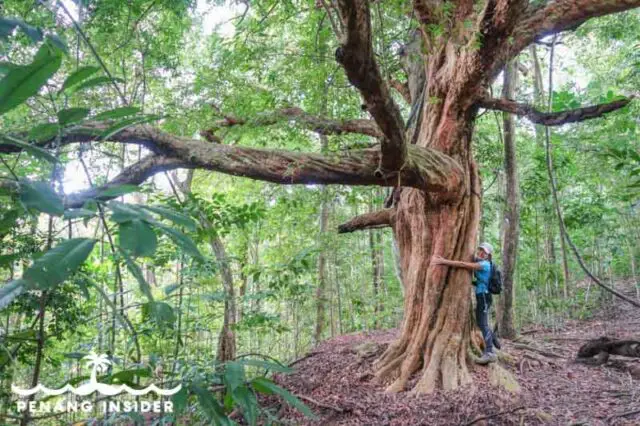
Right across the bridge in Bukit Mertajam is Cherok Tokun Nature Park, an expanse of wilderness with a bunch of less-trawled hiking trails. One of the best reasons to come here is to look for one of the four giant trees hidden away in the reserve. Contrary to Penang Hill, Cherok Tokun has some of Penang’s biggest and oldest trees, amazing natural sights that any nature lover wouldn’t want to miss. Don’t forget to check out the other great hiking in Penang Mainland, also called Seberang Perai. Want to explore it more? Stay at one of Bukit Mertajam’s best hotels.
And if you want to know more, our ultimate guide to Cherok Tok Kun has everything you need to know to hike this beautiful nature reserve.
47Explore Balik Pulau
By far, the island’s most natural and unspoilt area remains Balik Pulau in the southwest corner of Penang. This is where you will find fishing villages, unspoiled beaches, a lot of nutmeg, durian and banana trees, some of Penang’s best and most famous laksa and a pace of life which is the opposite of hectic George Town.
READ MORE — 28 Great Things to Eat, See and Do in Balik Pulau
Balik Pulau is also ideal for cycling and relaxing, and also has a couple of hiking trails, such as the 3-mile circuit at Kalan Pondok Upeh. It’s a good idea to base yourself here if you are looking for a quiet and more natural experience of Penang island.
48Ride Horses at Countryside Stables
Located in Balik Pulau not far from the serene Malindo Beach, Countryside Stables is a horse farm where guests can visit and ride horses in some of Penang’s most beautiful surroundings.
The farm has miniatures horses, Pure Bred Arabian Horses, Polo Pony, Thai, Myanmar and Malaysian ponies, donkeys and deer, and is a perfect place to spend a day out with your family and children or, if you are a rider, come enjoy a stroll on horseback.
49Enjoy a waterfall
Penang’s jungles are dotted by a number of beautiful waterfalls where you can take a refreshing dip. The most famous may be almost vertical Titi Kerawang Fall in Balik Pulau, but there are others around the island. The Penang Botanic Gardens waterfall, which used to be one of the most famous in Malaysia, and is unfortunately closed to the public today. But you can still go check out the very beautiful Chin Farm waterfall near Batu Ferringhi, or the 25-meter-high fall behind the Mutiara Indah apartment in Bukit Gambir.
Offbeat Things to Do in Penang
If you have arrived all the way here, you certainly have seen and done a lot of things in Penang and you need something lesser-known and refreshing. The following are a few ideas we consider perfect for those who want to scratch the surface and dig deeper into Penang than most.
50Take a trip to Bukit Mertajam
Few people know that right across the Penang bridge is Bukit Mertajam (fondly called “BM” by locals), a very overlooked town that has a lot of great things to do and amazing food to eat. Don’t forget that BM is a place where you can experience Penang life without the beautification and massive gentrification that has spoiled George Town. If you didn’t know much about Bukit Mertajam, I have written an article that lists all the best things to visit and the best food available in this offbeat Seberang Perai town.
51Visit a Haunted Hotel on top of Penang Hill
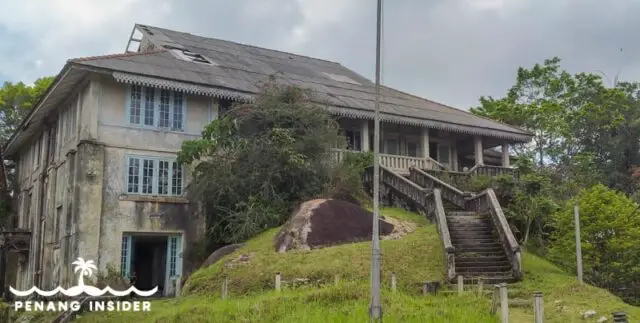
The Crag Hotel is a beautiful property set in a stunning location in the secluded northern part of Penang Hill. The Crag Hotel was first opened by the Iranian-Armenian Sarkies Brothers in 1895, was then leased as a boarding building to Penang Uplands School and remained operational until 1977. In 1991 it was used once again as a set for the movie “Indochine”, but since then it has stayed closed — well, abandoned, for you can certainly go visit the premises today.
The latest news was the Crag Hotel was waiting for a much-needed 300-room eco-hotel upgrade which, for the moment, still seems a far-fetched opportunity. Next to the Crag Hotel is also the beautiful building that housed the Penang Uplands school.
Like with every abandoned property in Malaysia, locals believe the place is haunted by ghosts. I’ve heard a man say that a couple of food sellers with no home used to stay here at night, and they lamented hearing muffled cries, something definitely otherworldly. Whether you come here by braving the steep and wild hiking path via Botanic Gardens or Bukit Olivia, or by walking after you get off the Penang Hill Funicular Train, a visit to the Crag Hotel is a dive into old Malaysia — the furniture, the quirky English-written signboards abandoned on the floor, and the larger-than-life abandoned bathrooms, something scary in itself, make a visit to remember.
52Marvel at Frog Hill, the Jiuzhaigou of Penang
Also called “Bukit Katak”, Frog Hill was an offbeat place in Seberang Perai, the mainland chunk of Penang State, that got famous thanks to the usual work of Instagram hype. Also called Lombong Kampung Guar Petai, Frog Hill Tasek Gelugor, or Guar Perahu, Frog Hill is an old tin mining site where water is collected into a series of pools crisscrossed by red earth ridges. It’s an otherworldly scenery of jagged red rocks emerging from viridian pools. Some people said that Frog Hill is like the “Jiuzhaigou of Penang” — quite an overstatement, but let the locals be proud of their backwoods.
READ MORE — A Complete Guide to Visiting Frog Hill
Frog Hill is absolutely stunning at sunrise, but you gotta get up pretty early to catch it. Indeed Frog Hill is roughly 30 minutes north of Bukit Mertajam, set at the end of a road that goes through a small village called Kampung Jarak Atas. Remember that the road to Frog Hill is not paved and gets often muddy, so don’t come here unprepared in the rainy season — good footwear and sandals you can quickly wash up are essential.
53Discover Soundmaker and Penang’s underground music
Few people know that Penang had a music history — Malaysia’s most famous singer and actor, P. Ramlee, hails from here — and fewer know that the island has an underground music scene. Set on the first floor of a nondescript building in Bishop street, Soundmaker is the island’s longest-running alternative rock club. From punk to metal, hip-hop and alternative, you’ll find something up your alley here.
Soundmaker is also a good place to go meet Penang’s musicians, especially the owner Cole Yew, a multi-instrumentalist and the man who knows everything that’s rocking in Penang.
54Pay a visit to the Jewish Cemetery
For a bit of unknown history, Penang Jewish Cemetery, the oldest single Jewish cemetery in Southeast Asia opened in 1805, is a quirk find in Jalan Zainal Abidin. First of all, it proves the existence of a Jewish community from almost as far back as when Penang was colonized, and second, it has some beautiful stone graves and interesting tombstones. The most recent tomb is from 2011, allegedly the last Jewish lineage on Penang island until now.
55Explore Penang’s Yoga and Health Underworld
Penang may not seem like the right place, but it has quite a few places for yoga and wellness . The most accessible is Wholey Wonder on 61 Jalan Gurdwara, which has a vegan restaurant and yoga studio. Just next door, the garden of Hin Bus Depot hosts the fun acro-yoga sessions (a bunch of very flexible people striking acrobatic yoga poses to introduce the art to passersby) as part of their Sunday Pop-Up Market.
Another well-known studio is Sunalini yoga, set in a George Town shophouse along Hutton Lane. Classes are small and run by enthusiastic iyengar-style yoga, which places attention on detail, precision and alignment in performing the right posture (asanas). The Space, located in the expat-centric area of Tanjung Bunga, is an intimate, cozy studio offering traditional yoga sessions (RM45/US $ 10 for walk-ins), and other special classes such as prenatal and childbirth yoga, stretching sessions, chakra yoga, and yoga for kids. They also run Kundalini Yoga sessions on Saturday mornings from 9 am to 10 am.
56Shop and Meet Artists at Hin Bus Depot Pop Up Market
This former bus depot has done so much to give a voice and space to Penang and Malaysia’s visual artists. Its rotating art and photo exhibits have definitely filled a hole in the island’s social and cultural life. Not only that, but they also organise a great pop up market (Saturday 11 am- 6 pm and Sunday 11 am- 5 pm) where EVERYONE can set up shop and sell ANYTHING by paying a mere RM44 (USD11) for the space. It’s certainly one of the coolest alternative shopping experiences in Penang.
From second-hand books to plants and flowers, home-made drinks and jewellery, and unique artist postcards there’s something cute, tiny and artsy for everyone at Hin Pop Up Market. And the best thing is, the stalls change mostly every week.
57Explore Jerejak Island, a former Leper colony that’s too big to dismiss
You certainly have seen it, as it lays like a sleeping crocodile right in front of Queensbay: Jerejak Island. Set between Penang island and the mainland, Jerejak was once a quarantine station during British colonial times and has been staying semi-dormant until now.
A few years ago there was plan to develop it as Penang’s outdoor and recreation hub, but nothing really came to fruition. You can, however, take a ferry over from Bayan Lepas and even overnight at the Jerejak Resort. The island offers a bunch of useless Insta-worthy places such as a rainbow pier, giant swings and bird nests, and a stairway to nothing. What’s good, on the other hand, is trekking and cycling around the island.
58Explore Penang by Bicycle
It may seem counterintuitive once you have seen Penang’s horrible traffic gridlock, but the island is a good place for cycling, too. For starters, the whole eastern coast from Karpal Singh Drive all the way to Penang Airport is connected by a cycle lane, whose two trunks connect at Queensbay Mall. A more experienced cyclist may want to attempt a full 83-kilometer round island circuit: if you are not that dedicated, you may break down this route into the Northern circuit, going from George Town all the way to Batu Ferringhi following the coastal route, or explore the Southern shore at Gertak Sanggul.
The interior of Balik Pulau is covered with paddy fields and small country roads that are a delight to cycle. If getting there on a bike sounds daunting, check out the Audi Homestay, a nice place to base yourself in Balik Pulau, which also has plenty of bikes for rental. And don’t forget that using a bicycle is also a good, quicker — but much sweatier — way to appreciate all of George Town’s nooks and crannies.
59Take a herbal sauna or realign your chakras at Bodi Heart Sanctuary
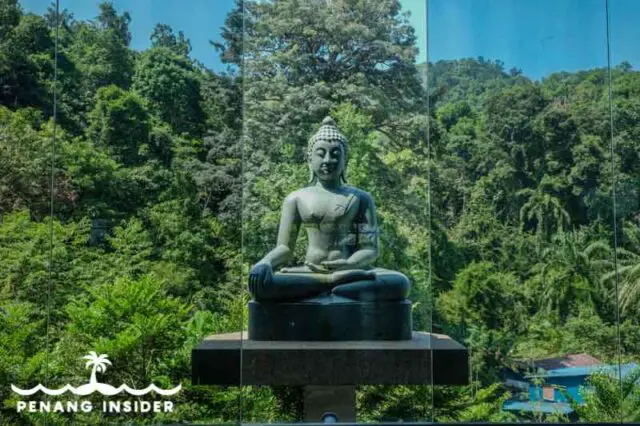
Set on a stunning natural location at the bottom of Penang Hill, Penang’s Bodi Heart Sanctuary is an oasis of (Buddhist) meditation that few people know about. The center organizes meditation courses and international events hosting monks from as far as Myanmar, India, and around the world, but you can also just come to have a stroll and relax in its beautiful gardens.
One of the perks is their herbal steam sauna open to the public for a donation of RM10. It’s a very soothing experience to while away an afternoon in a part of the island that very few people know about.
60Learn Silambam, an ancient South Indian martial art
Silambam Nillaikalakki, a form of stick-fighting martial art, originated more than five thousand years ago in the Kurinji mountains of South India and is one of Penang’s lesser-known heritages. It arrived with the Tamil migrants and survived in Malaysia, being mostly forgotten in favor of other types of Silambam in India.
Master Anbanathan has been teaching this art for decades from a rooftop in the Bali Rakyat of the Taman Tun Sardon area of Gelugor. The group meets almost daily from 7 pm to 9 pm and everyone is welcome to come to learn and experience the art. You can have more information on the Penang Silambam Nillaikallaki Group website.
Well, that sums up my list of the best things to do in Penang. I hope you’ll use them to plan a beautiful trip to Penang. To be fair, I couldn’t include everything, but if you feel I’ve made a major omission, please let me know in the comments below.


